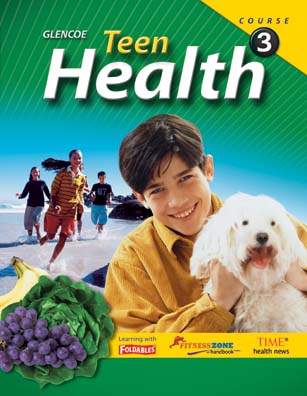
Teen Health Course 3Chapter 20: Safety and EmergenciesStudent Web Activities - Teacher ContentLesson 3Answers
a. Take cover under a heavy desk or table. b. Stay away from windows, glass panels, bookcases, hanging objects, or furniture that could fall. c. Watch for falling objects. d. Use something to shield your head and face. e. Use a flashlight if the lights go out. f. Turn off any gas. g. Do not rush for the doorways if you are in a crowded public place. h. Move away from buildings and utility wires if you are outdoors. i. Stop as quickly and safely as possible if you are in a moving automobile and move over to the shoulder or curb, away from utility poles, overhead wires, and underpasses. Below are some additional Web sites that offer information on how to prepare for natural disasters. Ask students if their families have done anything to prepare and if so what? Make a comprehensive list with the students' help of all the things that can be done to prepare for the type of natural disasters that are common in your area of the country.
Answers
a. First degree – the least serious in which only the first layer of skin has been burned. b. Second degree – in which the first layer of skin has been burned through and the second layer of skin is also burned, producing blisters. c. Third degree – the most serious, which involve all layers of the skin. a. Cool the burn. b. Consider a lotion. c. Cover the burn with a sterile gauze pad. d. Take an over the counter pain reliever. e. Do not use ice. f. Do not break blisters. Below are some additional Web sites that offer information on treating burns. You might also want to talk about how to treat chemical burns.:
|  |















